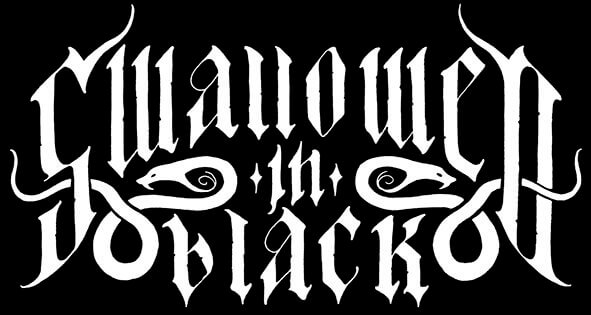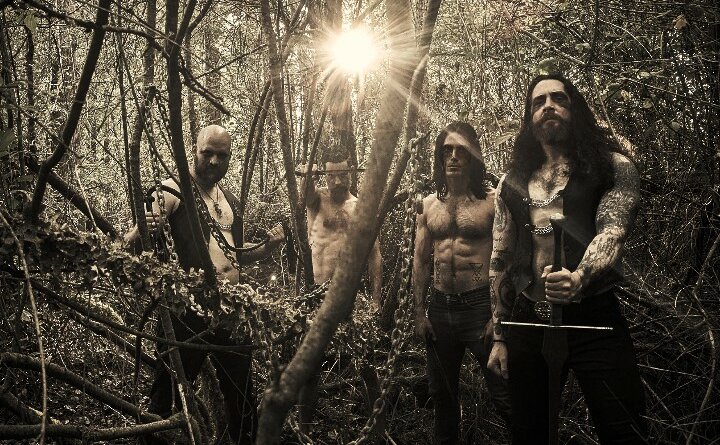“THROUGH THIS ABYSSAL WAY AND CLAMBERING BACK OUT, DO YOU REACH THE REAL MOUNTAINTOP AND ACTUALLY SEE WHAT IS ON THE OTHER SIDE?” – SHAWN HACHÉ (MITOCHONDRION)
Twelve tortuous years of trial, toil and tribulation gave rise through torment to Mitochondrion’s Great Work, ‘VITRISEPTOME’ – a metastasizing, monolithic masterpiece of otherworldly, elevated, arcane Death Metal alchemy. A cosmic cyclical convergence of elements and ether, chaos and order, death and rebirth, the Canadians’ immense, all-consuming third full-length conjuration is a singular unsettling ascension-descension executed obstinately through obsessive focus and painful precision. As this staggering literary and musical beacon stands defiantly before a vengeful, unforgiving firmament and maddening mysteries awaken to coalesce from every syllable, riff and bone rattle, creators-in-chief Shawn Haché and Nick Yanchuk crack Abraxas’ whip beneath Saturn’s fixed gaze one more time to dispense 137 degrees of parasitic wisdom.
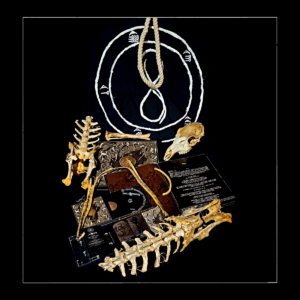 |PURIFICATE| One of the great traits of the underground is that artistic integrity is assured. Compared to mainstream manipulations, where priorities are obviously different, underground bands or artists are more likely to conjure and channel art that is pure, rarefied, undiluted, untainted by trends, commercial considerations or other external factors. Is this a quality you are cognisant of with Mitochondrion and specifically for the genesis of ‘VITRISEPTOME’?
|PURIFICATE| One of the great traits of the underground is that artistic integrity is assured. Compared to mainstream manipulations, where priorities are obviously different, underground bands or artists are more likely to conjure and channel art that is pure, rarefied, undiluted, untainted by trends, commercial considerations or other external factors. Is this a quality you are cognisant of with Mitochondrion and specifically for the genesis of ‘VITRISEPTOME’?
Shawn: “In regard to this mindset, I would say absolutely but also unconsciously. We are very much just making the record that we had to make; there really wasn’t another option. Any band that takes twelve years from writing to release has zero consideration of mainstream appeal, and then making an 87-minute record of dense, impenetrable Death Metal is certainly not seeking an audience or any kind of success.
“I think what we’re doing is fulfilling our own desires as artists and musicians, and trying to make something that we think people who have been with us for a long time would appreciate.”
Nick: “I was kind of hoping we’d be on the cover of Time magazine after all this work but, yeah, definitely, basically every aspect of this was the opposite of mainstream … even with regards to talking with the label: there was no pressure on us, there were no delivery requirements, there was nothing like that. Profound Lore / Chris let us just do what we had to do here.
“There wasn’t much to gain from making this album, this is just our response to the Abraxian whip, essentially; this is our sacrifice for nothing, we’re just bringing rot with that which should not exist. It’s basically out of our hands and I don’t think it could be further from anything commercial or mainstream.”
|HEXECUTION| Going right back to the debut, ‘Archaeaeon’ – another vast undertaking (which was created and released without label support) – this strong independent, underground spirit is a constant that has stayed with you right through from inception to the present day…
Shawn: “It’s just execution of vision – and the fact that anybody took notice is really special. I don’t think we were trying to make anything that would be appealing, or necessarily challenging, intentionally. It was always just following through on these very lofty, ambitious visions – and especially on ‘Archaeaeon’ because we were quite young when we made that one. When it was released, I was 23, so I try to put myself back in the mindset of being 21/22 and having this frantic energy that had to come out in some way. I know Nick was feeling it too because in that time we were just laser-focused and obsessed with creating something beyond the scope of anything we could imagine or even beyond the scope of the bands that we loved as well.”
Nick: “I think that’s a very interesting topic, to compare the two – ‘Archaeaeon’ versus ‘VITRISEPTOME’ – because there are some similarities there for sure. Younger, we were very much more focused on the band and nothing else, we were just churning out material, there was just energy flowing, as opposed to ‘VITRISEPTOME’ where we were taking a bit more time… If we tried to do ‘Archaeaeon’ now, it would probably take years; if we did ‘VITRISEPTOME’ back then, it probably would have been done faster. I haven’t thought about it that way before but, interesting for sure…”
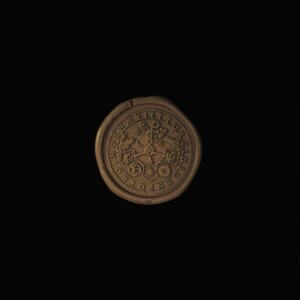 |VISIONIC| All great works begin with a great vision. The original conceptual vision you had for ‘VITRISEPTOME’ was obviously vast and probably epiphanic. Can you recall how or when that vision first came to you, how it grew and manifested over time, and did you feel a burden of responsibility to see the record through to its most optimal realisation?
|VISIONIC| All great works begin with a great vision. The original conceptual vision you had for ‘VITRISEPTOME’ was obviously vast and probably epiphanic. Can you recall how or when that vision first came to you, how it grew and manifested over time, and did you feel a burden of responsibility to see the record through to its most optimal realisation?
Nick: “I’ll maybe just tell the story of the album in a sense. There were several phases that happened. Originally, it started when, immediately and during the writing of the ‘Antinumerology’ EP, we quickly wrote the first song on the album, ‘Increatum Vox’; it was probably 2012. That song came together and back then it was almost 90 per cent the same as it is now. We’ve been playing that song for over a decade and we were playing it live even back then. It had very rough lyrics that eventually got changed quite a bit, but there are still some remnants of the original lyrics.
“That was the first phase and then over the next several years a couple more songs came together in chunks, like ‘Argentum Mortifixion’, an earlier version of ‘The Cruxitome’ that was mostly music but not lyrics. We had themes and concepts that we were planning, but it hadn’t really coalesced yet. We thought we had enough music to record a short album, then, and we were going to worry about it thematically with the lyrics later.
“We started recording it 2014 / 2015 – I think it was just ‘Increatum Vox’, ‘Oblithemesis’, ‘Argentum Mortifixion’, ‘Ignis Caecus’ and ‘The Cruxitome’, so not a very long album – but as soon as we started recording, it became blatantly clear that there were a lot of flaws and holes and only glimpses of what it was supposed to be, so we had to just abandon it and go back to the drawing board and the fermentation process. We had to step back a bit and meantime kept working on all this other material that we had.
“We have a big document that we put together for planning the album thematically and we kept working on that and it was around that time that it became clear what this really was and what it had to be, what the themes were, and how it all fitted in, so we had to consider ‘how does this all fit together from all directions?’
“I think it was probably in the six months after we abandoned the first recording, as we kind of let it all ferment, that it became clear that this had to be a double album, that this is a great work, an alchemical process, all those things together. So, there wasn’t an immediate, singular moment but a prolonged period of realisation. And a lot of it is testing ‘is this even doable?’, ‘is this going to work?’, which of course it did.
“One of our defining features is stubbornness. We saw what was before us and knew it was going to be difficult, but we knew we had to walk that path, even though it was going to be an arduous one.”
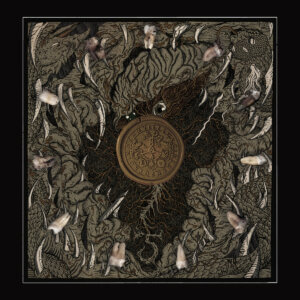 |CONSUMMATION| Years of blood, sweat and toil were invested into making this immense, monolithic record a reality (you mentioned twelve earlier, which is incredible, and I believe seven passed between recording the first drum and guitar tracks and the album’s eventual release…), but what is the payback for Mitochondrion? You have suffered for your art and evolution, but it’s going to reach only a limited audience (one of the drawbacks of the underground…) – does the reward come in a sense of personal satisfaction or fulfilment, from appeasing the muse? Or is there another place a reward comes from in answering this persistent calling to create a work that took on a life of its own and had to be finished?
|CONSUMMATION| Years of blood, sweat and toil were invested into making this immense, monolithic record a reality (you mentioned twelve earlier, which is incredible, and I believe seven passed between recording the first drum and guitar tracks and the album’s eventual release…), but what is the payback for Mitochondrion? You have suffered for your art and evolution, but it’s going to reach only a limited audience (one of the drawbacks of the underground…) – does the reward come in a sense of personal satisfaction or fulfilment, from appeasing the muse? Or is there another place a reward comes from in answering this persistent calling to create a work that took on a life of its own and had to be finished?
Shawn: “Something to think about here is the concept of legacy. It sounds a little bit pretentious and overblown, but even from when we were quite young we had the concept that even ‘Archaeaeon’ is going to outlive us: one day we will die and this music will still be alive. And you can apply that to any musician, any artist. Just the sheer, eerie concept of that, it always gives me chills to just imagine that someday someone will discover your music and you are not even in corporeal form, so that’s quite something.
“Ultimately, satisfying that legacy and continuing was super-important for this because I think we knew we had this statement in us and we knew that, while ‘Parasignosis’ and ‘Archaeaeon’ are great albums, we knew that the vision of what was possible was bigger, more grand and more vast, and I would probably say more enduring in the long run. It’s hard to say, because it’s only been two months since ‘VITRISEPTOME’ was released, but the fact that people are still excited about albums that were released during a funny time when we weren’t part of any so-called legacy Death Metal, the fact that there are still people who cherish those records, it speaks highly to me and speaks with a lot of volume. So, personal fulfillment, yes, but I think it kind of goes grander than that and possibly a little more lofty than that.”
Nick: “On my end, I think Shawn you nailed it with the legacy comment and the way you described it, but for me, I don’t know how long my bloodline will last but I know that this will last longer than that. Also, past work like this is a fantastic springboard or base to have for future work. In every album, we’ve had some call-backs to the previous album, and we’ve continued that. I don’t want to say it’s just ‘oh now we can steal a riff from this for the next album’, that’s not what I mean of course, I just mean we have even more of a thematic framework we can stand upon for our future works, so it’s a spherical ladder for us to reach further for the future.
“As for what you are saying about rewards and personal satisfaction, it’s been a really crazy year for me, so I have to say the album release has been lost in the noise a little bit there but, as Shawn said, it’s been two months, I think we’ll see what rewards or punishments will come from this in the next couple of years for sure. Definitely one thing that really feels nice is that I finally feel free to work on new material. There’s been a guilt associated with writing anything new for the last several years because that work should have been towards ‘VITRISEPTOME’ not towards something else, so that’s something that I’m enjoying now: freedom to write new material. Every other day now I’m taking up the guitar and writing a couple of riffs and forgetting them, but still I’m feeling more creative again, which is fantastic.”
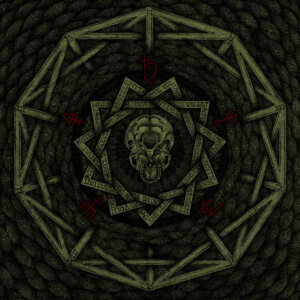 |AUTOMATIC| Skilfully and masterfully crafted, ‘VITRISEPTOME’ soars on two levels – musical and literary. Both elements are inseparable, extremely impressive and contribute equally to the whole. There are once more rumours of automatic writing and, in keeping with your preference for inventing names for your album titles, the word Vitriseptome is a fresh formulation. Did the automatic writing relate to the text or music, or both – and what could have been the source of this otherworldly intervention?
|AUTOMATIC| Skilfully and masterfully crafted, ‘VITRISEPTOME’ soars on two levels – musical and literary. Both elements are inseparable, extremely impressive and contribute equally to the whole. There are once more rumours of automatic writing and, in keeping with your preference for inventing names for your album titles, the word Vitriseptome is a fresh formulation. Did the automatic writing relate to the text or music, or both – and what could have been the source of this otherworldly intervention?
Shawn: “It’s a funny concept because there are elements of automatic writing here and there; I would say lyrically, though, it was extremely focused and specific. Nick and I are both obsessed by etymology, clearly, and symbolism and finding root meanings to just about everything. Just for fun, we’ll send back and forth little concepts of prefixes and suffixes and whatnot and where they originated from – Greek, Latin, etc. Constructing these album titles had been done kind of on the fly in the past, I believe Nick came up with both of the previous two, ‘Archaeaeon’ and ‘Parasignosis’ – it was just a case of that was what they should be. But when we are coming up with the titles for the songs, Nick and I will agonise over them for quite some time and we’ll bounce ideas back and forth and change them and reiterate upon them.
“For the album title itself, it was a lot more conscious. We were trying to achieve something specific and it really is a talismanic word because there’s so much involved into it, from the individual letters right down to parsing out suffixes and prefixes and origins and things like that. It’s very convoluted and this time it was a lot more deliberated upon. I think flashes of inspiration in a kind of automatic way are apparent but this one was quite specific, even if it appears like it’s very alien and like it comes from elsewhere, it was pretty deliberate.”
Nick: “Just to corroborate what Shawn is saying, definitely ‘Archaeaeon’, ‘Parasignosis’ are names that I channelled where something came out of me but ‘VITRISEPTOME’ was something we really worked on to the point – Shawn, I really love how you mentioned this as talismanic – I hadn’t really thought about it that way but I feel like that’s why there’s this tendency to capitalise the whole thing, because every single part is important. Even though it’s not an acronym or anything, every letter in it is important, like runic, talismanic almost in a sense. I don’t think that was clear to me exactly in that form. This is why I like doing all these interviews because there are things that I understood about what we’ve done that maybe haven’t been brought to the forefront of my conscious thoughts.
“If you’re familiar with our work, Shawn does the vast majority of the lyric writing and that’s something that he spends a lot of time on but the little bits and pieces of lyrics that I contribute are much more subconscious. That’s my writing style; it’s something that comes to me. And I think that balance with the lyrics and titling is a healthy one. Too much of the more subconscious stuff and I feel like maybe you’ll lose control of things a little and lose some of the conduits to the forces being channelled.
“Musically, that’s a tough thing to comment on – music and what you’re channeling and are you consciously writing it or not. Perhaps album structure is interesting… Album structure is a massive undertaking. Mostly it’s just me sitting there through the whole album constantly – ‘this is right, this is wrong’ – and that’s very much labour, but a lot of it is very spontaneous and inspirational sometimes, where it’s just all of a sudden I see it clearly where it has to be and I don’t know where that came from. But at both ends of the spectrum album structure is just hard labour and organising and running through stuff, running through stuff, yet more spontaneous than you actually think, too.”
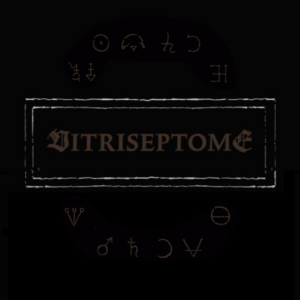 |IMPONDERABLE| Conceptually or thematically, ‘VITRISEPTOME’ is boundless and intricate. The linguistically complex narrative is not easy to decode, although the liner notes included with the records definitely help. It’s an existential cosmic riddle traversing Mars, Saturn and Mercury through seas, valleys and peaks of imponderable chaos, fornication and servitude, void gnosis and inexorable transformation. How pivotal or climactic is the summoning of Melek Taus, Saturnus, Abraxas and Satanas at the end of penultimate deathrite ‘Viabyssm’?
|IMPONDERABLE| Conceptually or thematically, ‘VITRISEPTOME’ is boundless and intricate. The linguistically complex narrative is not easy to decode, although the liner notes included with the records definitely help. It’s an existential cosmic riddle traversing Mars, Saturn and Mercury through seas, valleys and peaks of imponderable chaos, fornication and servitude, void gnosis and inexorable transformation. How pivotal or climactic is the summoning of Melek Taus, Saturnus, Abraxas and Satanas at the end of penultimate deathrite ‘Viabyssm’?
And is it important that the plot or odyssey remains shrouded in mystique or is it possible to articulate a brief or profound synopsis of the overarching storyline or message?
Shawn: “There’s a lot to unpack here. The research for this record is a pretty good intersection of alchemy, hero’s journey specifically to get that structure just right, I would say a lot of necrosophic work, basic grasp of mythology and our utter obsession with Gnosticism, Abraxas, Saturn and then, more personally, exploring the concept of the Saturn’s return in astrology – the concept that when you’re born Saturn is fixed in the stars and when you reach the age 30-31 it reverts back to that origin in the sky again. It’s those last few years leading up to it that really is a time of trial and profound change and transformation. All of these concepts – transformation, death, rebirth – they all get explored through these archetypal figures and these allegorical figures. We can look at that string of names there and you see some of them are already apparent, everything from a Luciferian peacock god to the all-devouring Saturn to the polar-unifying Abraxas to the ultimate antinomian figure of Satan, we can all integrate those archetypes into ourselves to explore this transformation.
“The narrative of the record starts with a very violent statement by a complete ignoramus screaming at the heavens at what he thinks is god and he thinks he’s conquered whatever deity force, but he soon learns that he has absolutely no idea what he’s up against and gets essentially flicked off like a flea, plunging into the abyss. Then the rest of the record is essentially a point of view clambering back out from the abyss and the trials within that sort of a Dantean-like experience through the multiple sides. Through this abyssal way and clambering back out, do you reach the real mountaintop and actually see what is on the other side? I don’t want to dive in too much and parse out all the bits of the storyline here, but just provide enough to give people a bit of a direction into it so that maybe they can suss it out for themselves a bit more…”
Nick: “I don’t think we’re trying to keep it too clandestine but at the same time… That’s probably the most-clear description I’ve ever heard Shawn say of the album itself, so I actually appreciate that a lot! As an aside, given that Shawn is more responsible for the themes, lyrics and handling that whole thing, structurally-wise, with you pointing out the end of ‘Viabyssm’ where we call out all those names and summon them, there’s sort of a feeling of an ending to the album there and then ‘Antitonement’ is almost like an epilogue in a sense. I don’t think I originally had that song on the end there, but the way those riffs are, they feel like epilogue riffs, if that makes any sense, and it was like ‘this is how we have to end this album’ and then we can loop it back around, so it’s cyclic. And where the hero’s journey actually ends on that cycle, you’d shift it around a little bit, depending on thematically.”
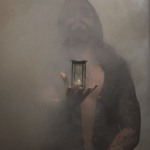 |PRESTIGE| There seems to be a sting in the tail as the journey’s end offers neither death nor salvation, but instead a never-ending cycle of torment (‘a lifetime of agony has only served in His rebirth’). An ouroboric ordeal? The wonderful oxymoron ‘umbilical noose’ from ‘Flail, Faexregem!’ also implies an endless trap. Is there any resolution or meaning at the end, or does resolution / meaning come conversely from the fact that there is none?
|PRESTIGE| There seems to be a sting in the tail as the journey’s end offers neither death nor salvation, but instead a never-ending cycle of torment (‘a lifetime of agony has only served in His rebirth’). An ouroboric ordeal? The wonderful oxymoron ‘umbilical noose’ from ‘Flail, Faexregem!’ also implies an endless trap. Is there any resolution or meaning at the end, or does resolution / meaning come conversely from the fact that there is none?
Shawn: “It’s an interesting paradox to explore. A lot of the themes at this specific stage in the record are very much toiling in the material plane, recognising that we are trapped in this material existence, in a very Gnostic sense that all manifest is a prison essentially. That cyclical nature is almost like a Samsaric kind of effect where you are locked into this cycle of death and rebirth, and umbilical noose could reflect the idea that ‘once you are born you start dying’, very simply, but there’s no separating death, birth, life – it’s all this continuum. This is where I like to explore things from an almost New Age-y approach. I hate to use that term, but the idea that all is polarity and that any continuum between extremes is ultimately the same thing with a specific hidden structure that you have to discover. Where does death become birth, where does light become dark, where does hot become cold on this continuum? A line like ‘a lifetime of agony has only served in His rebirth’ is definitely a cynical line and is probably in response to more of an obeisance to a devil-like figure, a Saturn-like figure, a Satan-like figure, where at that moment in the album that aggressive statement is very specific to the narrative. A point when one is in the throes of antinomianism and has just completely given oneself over to that darkness, it’s ultimately a trap and it needs to be escaped and explored further. That’s not the end; it’s a path to something else.”
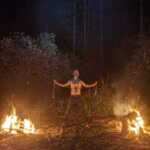 |ORCHESTRATE| Black / Death Metal is characterised by a dense, impenetrable wall of dissonant sound. However, you have managed to infuse ‘VITRISEPTOME’ with an orchestra of instruments in addition to conventional guitars, bass and drums – namely flutes, bone horn, bone rattle, tambourine, bandoneon, timpani, singing bowls, scythe, keyboards, mortar and chains. Why was it necessary to incorporate so many different sounds and how challenging was it to achieve an organic mix that left everything audible?
|ORCHESTRATE| Black / Death Metal is characterised by a dense, impenetrable wall of dissonant sound. However, you have managed to infuse ‘VITRISEPTOME’ with an orchestra of instruments in addition to conventional guitars, bass and drums – namely flutes, bone horn, bone rattle, tambourine, bandoneon, timpani, singing bowls, scythe, keyboards, mortar and chains. Why was it necessary to incorporate so many different sounds and how challenging was it to achieve an organic mix that left everything audible?
Nick: “I think it’s something that we’ve always sort of done, even starting with ‘Archaeaeon’. A lot of it comes from drawing on non-Black/-Death Metal influences and also from hearing other Metal and thinking ‘there should be x, y or z going on in the background to make it better’. I’m a ‘more is more’ type of person in extreme music: just load it up and push it past the limit of what your ears can handle – why not? In general, just with the standard drums, vocals, guitars, bass, there’s a fair amount of sonic space still remaining, so there’s room to add more. There’s always a fair amount of space to add additional instruments; it’s a good way to provide more depth and even a little bit of narrative and drama. Like, if the lyrics say ‘lightning strike’ just throw a fucking lightning-bolt sample in there, like why the fuck not? It’s great.
“And, like I said before, we’ve kind of done this before. We played real timpani back on ‘Archaeaeon’ – that’s one of the things I love most about the album. We took the door off of Karl’s apartment, dragged the timpani up and one weekday night just played it in his downtown apartment [“…much to the chagrin of all his neighbours…” – Shawn] and somehow they didn’t call the cops on us. I can’t imagine hating a neighbour more than us back then. But I guess there’s some inertia in that approach.
“In terms of achieving an organic mix that left everything audible: I would say that it isn’t all audible. When we put the vinyl version on after we finally got the test presses, there was a lot of ‘oh shit, I forgot that that was there’ because the vinyl mix is a lot different and Shawn and I were like ‘we forgot about that, we forgot we put that there’ … there’s some chains here, there’s some bone rattle there… If you really want to hear all of the shit in there, you either have to have a good ear and have a vinyl version, or take some mushrooms or research chemicals and really, well, that’s the only way, I think.”
Shawn: “Another thing to consider from a thematic perspective is that if you think of it from the magical ritual side of things, adding more elements that contribute to an intention or a theme heightens the success of a ritual, that’s just really basic stuff. By adding a bone flute to a song about death, that’s very simple; by adding in wind sounds, wind instruments with the element of air present, stuff like that – making those conscious connections between sympathetic workings and elements, etc. That’s how I interpret adding unique sounds. By adding a lightning strike to a part that calls for it, it makes it more profound and punctuated.”
|CHAOSORDER| There’s always chaos in this style of music, but in the case of Mitochondrion, there is also great order within the chaos. This mirrors and embodies the universe: chaos within the order and order within the chaos. Is this deliberate or conscious – are you bringing chaos and order together purposefully, perhaps as some form of reflection or mantra of the universe / existence / creation?
Shawn: “There’s always a conscious ebb and flow of order and chaos in what we do and I think there are riffs that we do that are particularly chaotic or unnerving and then there are riffs that are very straightforward, four-four-headbanger riffs. There’s also complete dissonance and at the same time a ton of melody. So, really playing with extremes and polarities, dissolution and coagulation, yeah, it’s extremely important to us and it’s very conscious in how we write music and how we construct records and how we order records – everything from completely bizarre interlude tracks or outros to very straightforward guitar-bass-drum-vocal sections, it’s all important.”
Nick: “I feel like there’s an aspect of truth when you have it like this. The more chaos and the more order you have in art, that gives it more truth. If it’s all chaos, it’s great but we’re beings of order and it needs to have something more added to it, and if it’s just all order then where’s the Death Metal, where’s the death in the Death Metal?”
 |CHOIR| Dual vocals are quite common these days but you take it much further as all four band members (and some others besides…) lend their larynxes to ‘VITRISEPTOME’. What is the thinking behind this – is it so that you have a multitude of different vocal timbres and tones within the soundfield or more a ceremonial, ritualistic, symbolic process of inviting all participants to partake of the communion?
|CHOIR| Dual vocals are quite common these days but you take it much further as all four band members (and some others besides…) lend their larynxes to ‘VITRISEPTOME’. What is the thinking behind this – is it so that you have a multitude of different vocal timbres and tones within the soundfield or more a ceremonial, ritualistic, symbolic process of inviting all participants to partake of the communion?
Shawn: “Your sensibilities are pretty spot-on because it is both. It’s like Nick said – when there’s room in the sonic field for more, we will add more. So to add different tones of voice is important to beef up a chorus or to punctuate certain words and often – this is quite interesting – Nick will have a vocal pattern and I will have a vocal pattern in mind and we will work to combine them and intermingle them, and sometimes they work really well right on top of each other and other times we just have to make the slightest tweak and they will work exactly as we want them.
“Then, after that, a lot of it is bringing people in our inner circle into the music so that they are literally a part of the record. Many of the individuals that contributed vocals on the album are extremely-close individuals who have either been in the band in the past or have been instrumental on the sidelines for years, so it’s important to get them within the music as well.”
Nick: “I don’t think we ever set out to have specific vocals for the band. It has just been emergent through the progression of the band since its inception. Shawn with his inhales, and then I have sort of midrange exhales – that’s just what came out of my mouth when I started doing vocals – Sebastian has low exhales and then there’s room up top for higher exhales from Karl every once in a while. We just coincidentally all land in a different range, which makes it easier to add layers of vocals so that it’s not just three people doing the same vocals at the same time. There’s more dynamic as everyone has a different vocal style to play with.
“For live performances, I find it much more engaging when everyone is doing vocals, everyone has an instrument, nobody is off in the corner doing their own different thing. I don’t know if that’s a conscious element I’ve been trying to create, but I know that when everyone is playing an instrument and doing vocals, then they are more engaged.”
 |TRIALS| It’s impossible for anybody outside the inner circle of the band to even begin to imagine the enormous reserves of patience, persistence and perseverance that must have been required to conceive and conjure a work as monumental as ‘VITRISEPTOME’, which was literally years in the making. Did it take a personal toll (I read somewhere that it almost killed you, not sure how overly-dramatic or sensationalist that was…) and were there any moments when you were close to giving up? What were the most difficult elements and biggest obstacles that presented themselves?
|TRIALS| It’s impossible for anybody outside the inner circle of the band to even begin to imagine the enormous reserves of patience, persistence and perseverance that must have been required to conceive and conjure a work as monumental as ‘VITRISEPTOME’, which was literally years in the making. Did it take a personal toll (I read somewhere that it almost killed you, not sure how overly-dramatic or sensationalist that was…) and were there any moments when you were close to giving up? What were the most difficult elements and biggest obstacles that presented themselves?
Nick: “The amount of work an album takes when you’re this involved, and not just walking into the studio, playing your instruments and leaving, you’re doing the editing, mixing, recording, writing… when you’re doing everything yourself, the amount of work is exponential compared to the album length. So, a 45-minute album versus an hour-and-a-half album, the latter takes probably ten or twenty times the amount of work. That’s something I don’t think I appreciated when we started out on this; we definitely bit off more than we could chew but we had no choice, we had to continue.
“As far as setbacks and hurdles go, we had some major problems with the studio. The first engineer kind of fucked us over and, while the studio was very accommodating and found a way to make it work for us, we ended up having to split our time slots around which meant we basically lost two days of recording time, so Karl just had to fucking blast the drums out there and it was a lot of extra overhead for the studio to deal with as well. Essentially, because they split our time-bloc up, we lost a lot of studio time and they were left scrambling to try to accommodate us because the original engineer had fucked us over and fucked the studio over, too.
“That was the first problem – we had less studio time than we thought originally – and that was the nucleus for a lot of cascading issues. The original edit that the studio had, they had to find someone else to do it for basically pro bono, and it was the wrong decision. An hour-and-a-half Death Metal album is not something that somebody can just quickly knock out, so it was never going to be a good edit and I basically had to scrap everything and start from the beginning again and I just did it…
“I don’t know Pro Tools so I had to learn Pro Tools, had to get Pro Tools, and then one thing that I’m very happy we did but which also created a lot of additional burden was that we tempo-map click-tracked out the whole album, but it’s not normal where you just sit there and go ‘oh yeah, this song is 180bmp’ or whatever; we would play through the songs until we had it perfect and we went back and tempo-mapped it out. So it’s all organic but it’s also tempo-mapped. But the problem was that switching from Pro Tools to something I’m more familiar with like Reaper, there was a problem there because all that information was getting lost because it doesn’t exist in there, so we had to get some guy to write a software tool to export that. There was all this shit going on. I had taken on a studio project and had to handle it myself and I wasn’t ready for that. And that’s the crux of the biggest problem with it.
“Another thing is that when a project starts off on the wrong foot like this, and it’s this long, and then we go back to record more, we haven’t played these songs in months and months, so we’re rusty again and you’re kind of moving in a circle constantly trying to stay on top of everything. The amount of extra work that was added! When I say it almost killed me … while all this is going on, I’m ignoring my personal life, I’m ignoring my health, I’m sitting there drinking more and staying up and all of a sudden you’ve got all these health problems from being a sack of shit and sacrificing everything to focus on the album.
“A lot of respect to Arturo / Cold Poison and Xav [Tehom Productions] who did the vinyl mix and mastering because, getting them involved in this too, I feel bad about it right, because they are fucking cursed too from this, because it’s so much fucking work. Especially Arturo, he did tons of work for the artwork, he spent years working on that, too. Oh and very important. For a project this big, you don’t just have a nice little project file that you’re working with, you have multiple project files and you’re constantly combining things and splitting them up so that you can use it. Then every time you do that, something’s fucked up and you gotta go back and fix it and the amount of work is exponential. It was fucking crazy, I can’t believe it.”
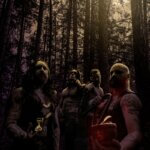 |LEGACY| Irrespective of whether you ever added to your discography with a third full-length, Mitochondrion’s legacy as pioneering purveyors of prime apocalyptic Black / Death Metal alchemy had already been secured with the celebrated ‘Archaeaeon’ and ‘Parasignosis’ LPs, released in 2008 and 2011 respectively. While it feels like you have further upped the ante in terms of realised ambition on ‘VITRISEPTOME’, I wonder is that being somewhat unkind to its predecessors, which are both extraordinary works in their own right… I know it’s almost like asking a parent if they have a favourite child, but critically how would you compare the three full-lengths with one another?
|LEGACY| Irrespective of whether you ever added to your discography with a third full-length, Mitochondrion’s legacy as pioneering purveyors of prime apocalyptic Black / Death Metal alchemy had already been secured with the celebrated ‘Archaeaeon’ and ‘Parasignosis’ LPs, released in 2008 and 2011 respectively. While it feels like you have further upped the ante in terms of realised ambition on ‘VITRISEPTOME’, I wonder is that being somewhat unkind to its predecessors, which are both extraordinary works in their own right… I know it’s almost like asking a parent if they have a favourite child, but critically how would you compare the three full-lengths with one another?
Shawn: “‘Archaeaeon’ is a statement of youthful exuberance. When you look back at our ages and where we were in life, it’s just unbelievable that this was pulled off at all. It really is a statement of sheer will and ambition, and, in that sense, I’m extremely proud that the songs that were written almost 20 years ago still hold up. Some of those riffs were written I’m sure when Nick was a teenager, and when I was a teenager as well, so the fact that the record still has a power and potency to it and finds sympathetic ears is really special.
“‘Parasignosis’ is the gateway; that’s the one that took us into the world; it’s the one that was really cherished for quite a while, so I’m extremely thankful for it. The process was again long, convoluted and winding, but ultimately the results were positive in that sense. However, the overall tone of the record reflects people very much in a dark place in their lives and once you put that kind of energy into the world and set it free and attach yourself to it, it’s quite often that it will lead to further toil and darkness, and force you to look inwards and become introspective. So on a personal level, ‘Parasignosis’ was quite a painful record – but the payoff was tenfold.
“With this new one, it was really important for me to have that final sense of … ‘optimism’ isn’t the right word, but perhaps a longer view of the inner landscape of one’s suffering: it’s suffering for a reason, not just for the sake of it. It’s not just toiling in an abyss because it’s dark in there and that’s where we like to be … you do that for a reason, because you must pick yourself back up and you must reintegrate whatever you’ve accomplished and instill that into your world. It’s a good reminder because we should always be doing that but, to me, that’s ultimately what ‘VITRISEPTOME’ represents.”
Nick: “If I think about the albums, for ‘Archaeaeon’ there was so much ferocity and fire bellowing behind us. We were in our youth and that came through on the album. We were more influenced by War Metal at the time and by local harsh electronics, that kind of stuff… On ‘Parasignosis’, we were trying to regress and make more of a straight Death Metal album; obviously it didn’t turn out that way. Like Shawn said, it was definitely a dark time in our lives, especially in mine, and it’s just a darker, more Death Metal, more emergent record. It was supposed to be an EP and got derailed a bit and then took the form it has. I mentioned earlier how you can build on your previous work and with ‘VITRISEPTOME’ I was trying to pull from both the previous albums. For me, it’s very much a graphical triangle: you could put axes between all the albums in various ways if you wanted.”
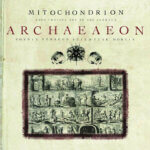 |BETHREADED| Indeed, it’s very apparent that there’s a linear thread running through the three records. I’d suggest this is evident going back to the oldest song on the debut LP, ‘Oath in Defiance’. Looking at some of what Shawn wrote about that song on the liner notes [‘Here the parasite represents the grain of crippling knowledge or insight that initially leads one to nihilism. However, instead of rolling over and dying the parasite sparks a psychological call to arms of the intangible subject. Our weapons are the unseen and undetected change in the mind. Through the realisation that the world is a sham, we can spit on the grave of forced purification.’] To me, that links forward to the worm (‘the emanation of breathless clay’) on ‘Increatum Vox’, as much of the same mood and ideas appear to be floating around in there…
|BETHREADED| Indeed, it’s very apparent that there’s a linear thread running through the three records. I’d suggest this is evident going back to the oldest song on the debut LP, ‘Oath in Defiance’. Looking at some of what Shawn wrote about that song on the liner notes [‘Here the parasite represents the grain of crippling knowledge or insight that initially leads one to nihilism. However, instead of rolling over and dying the parasite sparks a psychological call to arms of the intangible subject. Our weapons are the unseen and undetected change in the mind. Through the realisation that the world is a sham, we can spit on the grave of forced purification.’] To me, that links forward to the worm (‘the emanation of breathless clay’) on ‘Increatum Vox’, as much of the same mood and ideas appear to be floating around in there…
Shawn: “‘Oath in Defiance’ set this thematic motif that continued on throughout our entire existence. Nick captured it perfectly when he came up with this term ‘parasitic wisdom’, the mitochondrion being the oldest of the archaea that was invasive into the cell, and thus breathed life into this physical being even more. That’s where the youthful idea of the band name took on a lot more significance. This idea of the parasite – you could even call it the gnostic spark – where this animating, motivating force within really doesn’t care about you. It could come in the form of intense darkness and despair… but it forces change and it forces something else to emerge from what was. So that’s a really great observation and I’m happy to see that people are pulling that one together.”
Nick: “As a trivia aside, the oldest thing on ‘Archaeaeon’ is the first riff of ‘…into the Pit of Babel’, so the very first riff on the album is also the oldest thing on the album.”
|INCONSUMPTIO| Is the modern world ready for an immense, all-consuming sonic offering as uncompromising and involving as ‘VITRISEPTOME’? For the intended immersive experience, the album needs to be digested as a whole, which throws down a real challenge to a prospective audience who will likely have neither the attention span nor focus to fully commit. As a colossal, labyrinthine body of art that demands a significant investment of time, introspection and reflection, is this record a fist in the face of a regressing society hooked on instant gratification, comfort and convenience?
Shawn: “I would say it functions as such … whether that was intended … not necessarily. It’s always just about satisfying vision. However, in the modern world, a lot of people are not ready for this [“…it was kind of a shitty time to put out an hour-and-a-half-long Death Metal album…” – Nick]. In the day and age of TikToks and Playlists and really focusing more on singles, it has passed a lot of people by and this record is not set up for success, but I think – as we touched upon in the first question – we are not seeking that kind of success. Those who devote the time and the energy and seek the challenge – and enjoy the challenge – this is for them. And it turns out there are quite a few people out there who are eager for it, accepted it and are defending it, which is even cooler, because some of the earliest reviews we saw forming were very critical of the length and the impenetrability – that’s fine, that weeds out a lot of people who don’t need to hear it, whereas for the people who see that as a challenge and a rallying cry, those are the people who are on our team and have always been. And it’s great to see that there are possibly even more of them out there now that this niche subgenre of really convoluted, strange, technical, challenging Death Metal has a much wider listenership than we were ready for and aware of. So the record is being met with even more sympathetic ears than I expected.”
Nick: “The album is structured in a way – and this was intentional to make it more digestible due to its length – that’s it can be treated as two smaller albums – Dissolution and Coagulation. For me, personally, I’ll listen to one side on my way to work and the other side on the way home. There’s such weight to these albums that when you get back in your car you haven’t forgotten what you just heard earlier. It’s definitely digestible in parts and that was intentional.
“It also divides into three smaller albums – Salt, Sulfur and Mercury – and it splits into four, which is Separation, Confusion, Initiation and Return, the four sides of the double LP. Those are also digestible individually as well. An hour-and-a-half Death Metal album is a lot of work to digest, but it’s also presented in a way that it can be digested in smaller parts if need be. We didn’t think ‘wow, if it’s going to be this long, it has to be broken down’; it was more a case of the nature of my album structuring – the way that it made sense to me and came together lends itself to breaking it down. If it was one big chunk and there was no way of breaking it up, I don’t think I could have handled it mentally. Having multiple breakpoints is a result of how my brain was able to manage something like this.
“I think listening to it on vinyl with headphones is probably the best way to do it. The physical act of having to go flip the vinyl, that extra breathing room, adds a lot of extra value to the listening experience and is very conducive to the way the album works, especially the locked groove on Side C, Initiation – there’s no way to do that, on digital or tape or CD, to have that build up and then be released on that next side, other than on the vinyl. We could’ve made a two-hour album with 30 minutes of just noise but we’re not going to do that to anybody. If we were really cruel and really wanted to just fuck with everybody, sure, we’d have made 30 minutes of noise right there, why not, it’s already a double album so fuck you. But we were never trying to make a statement of how long of an album we could make; the final result is everything that was required of the work.”

